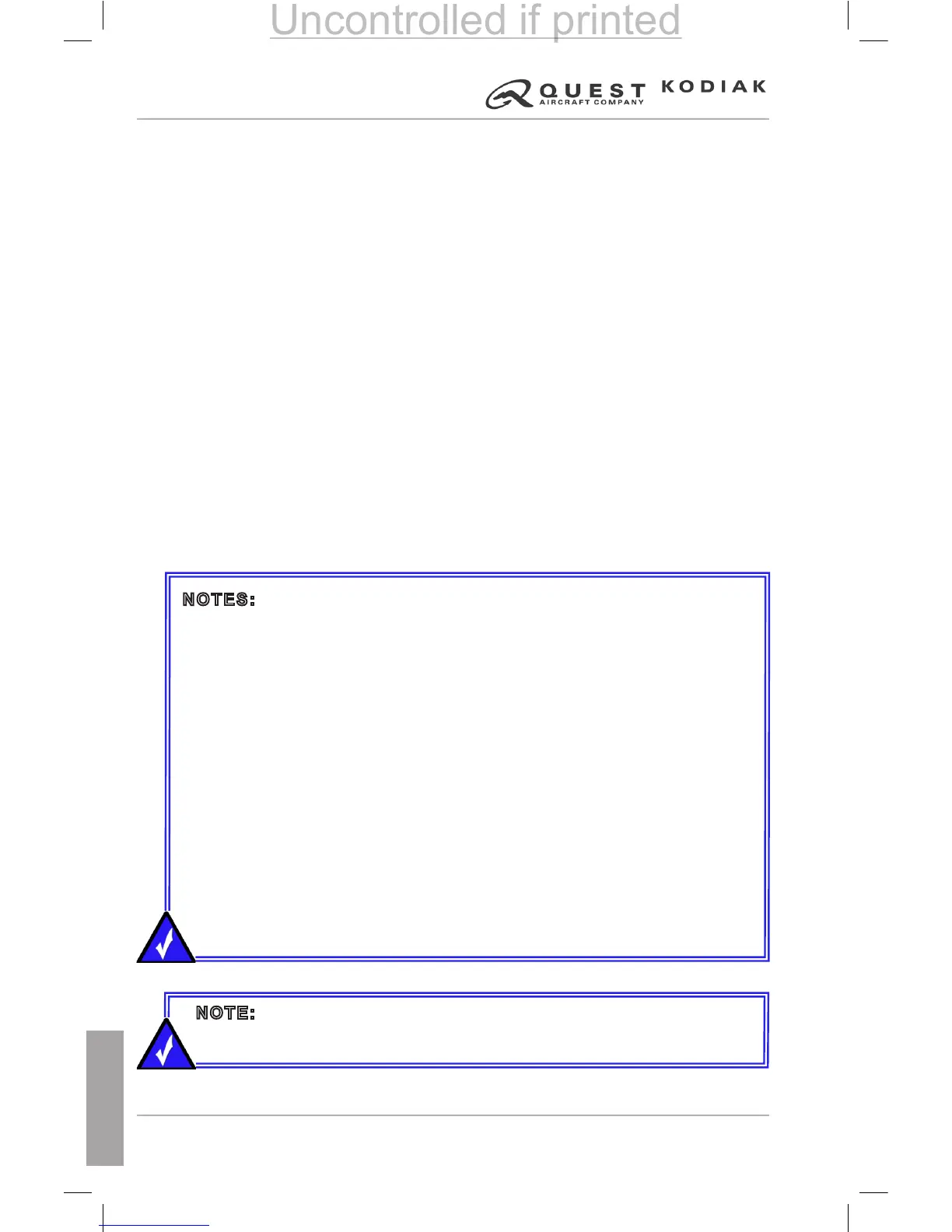OBSTACLE LANDING DISTANCE
(Max Weight 7255 lb)
(Refer to the table on the following page.)
Conditions:
Winds
.................................................................................................. Zero
Runway.......................................................................... Dry, Level, Paved
Flaps
............................................................................................ 35° (Full)
Approach Airspeed
....................................................................... 76 KIAS
• Power for 3° descent to 50 foot obstacle, then gradual reduction
to IDLE at touchdown. BETA range (lever against spring) after
touchdown.
Example:
Outside Air Temp
............................................................................... 20°C
Weight
...................................................................................7255 pounds
Pressure Altitude
.........................................................................2000 feet
Headwind.............................................................................................zero
Obstacle Speed (V
): 76 KIAS
Landing Ground Roll: 824 FT
Total Distance Over 50 Foot Obstacle: 1641 FT
NOTE: Red shaded areas represent data at temperatures greater than
the maximum approved operating OAT, but may be used for the purpose of
interpolating.
NOTES:
• Short eld technique utilized as outlined in Section 4 of the Pilot’s
Operating Handbook.
• Decrease distances 10% for each 14 knots headwind.
• For operation in tailwinds up to 10 knots, increase distances 10% for
each 2 knots.
• For operation on a hard, dry, grass runway, increase distances by 20%
of the ground roll calculation.
• To land with the aps up, increase approach speed by 22 KIAS and
allow for approximately 55% longer distances.
• Use of maximum reverse thrust after touchdown will reduce ground roll
by approximately 5%.
• For sloped runways (up to 3% slope), increase the distances by 27% of
the ground roll distance for each 1% of downslope. Decrease distances
by 9% of the ground roll distance for each 1% of upslope.
• For operation in air colder than provided in this table, use the coldest
data for landing distances.
• Dashed entries correspond to outside air temperatures beyond the
aircraft operating limits.
